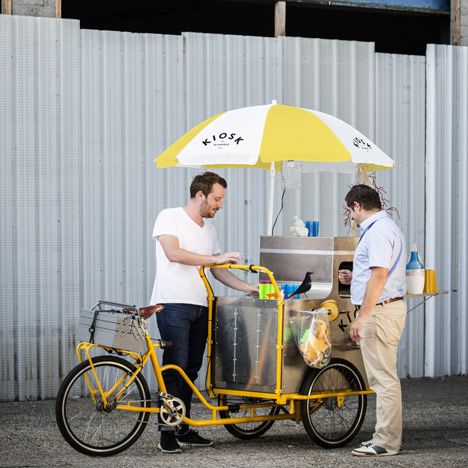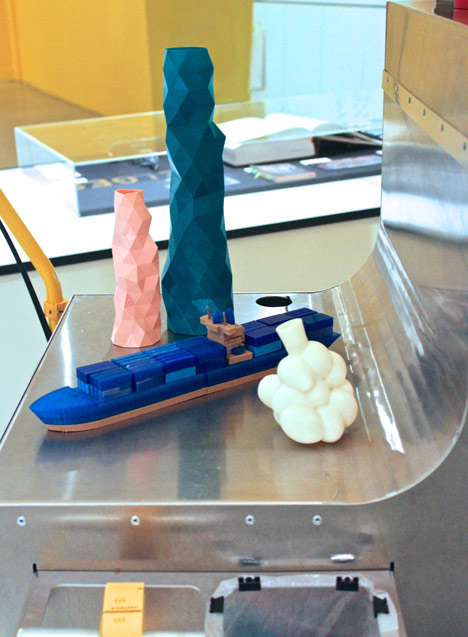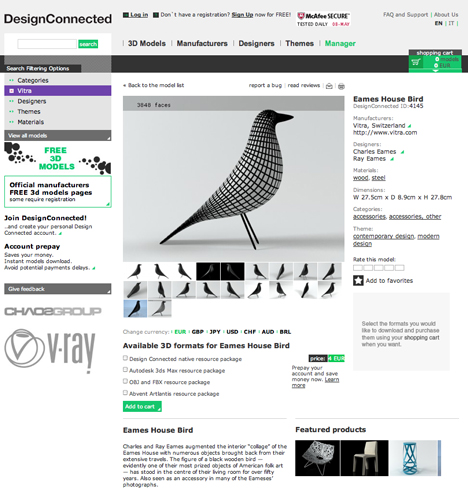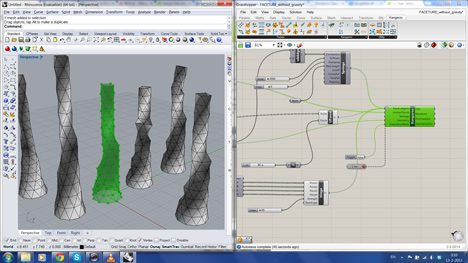
Design award contender exhibits copies of rivals' objects
News: a nominee for the Design Museum's Design of the Year award has caused controversy by presenting 3D-printed copies of two of the other finalists' work.
Antwerp-based designers Unfold presented replicas of projects by fellow nominees Phil Cuttance and PostlerFerguson as part of their Kiosk 2.0 project that went on show at the London museum yesterday.
"Some people have reacted very strongly to it," said Daniel Charny, a curator who nominated Unfold's project for the exhibition. "This is part of what's going to happen with 3D printing. Is it a cheap fake or is it a new piece? When is it okay, when is it not okay?"

Kiosk 2.0 is a mobile 3D printing laboratory modelled on Berlin sausage-vending carts. The replicas were displayed on the cart alongside copies of design classics including Marcel Wanders' Egg Vase, Alvar Aalto's vase and Charles and Ray Eames' wooden blackbird.
Unfold's Claire Warnier and Dries Verbruggen created versions of Cuttance's Faceture Vase and PostlerFerguson's Papafoxtrot toys by watching online movies about how the products were made and downloading drawings from the internet.
"A lot of the classical stuff like the Eames bird, you can just download," says Verbruggen. "A lot of designers are putting a lot of information about their designs online. A lot of brands, especially in furniture, publish all the digital files because they want architects to use their renderings so they specify their furniture. They don't understand that a lot of that is production data. You can just replicate it."

To generate their version of the Faceture Vase, Unfold watched an online video of Cuttance making the product and then wrote a computer script to achieve the same effect with a digital file.
"We didn't have access to the vases so we couldn't scan them," said Verbruggen. "So we reverse-engineered them. Phil has this really nice movie where he details the whole process, so we started counting how many triangles he uses, how many cuts he makes. We translated that into a computer script and we made a programme that generates them."
Cuttance makes the vases by hand-scoring a sheet of plastic with a triangular pattern, then rolling the sheet into a tube and manipulating it by hand to create a unique shape. This is then used as a mould for a vase, which is cast in resin.
After his initial surprise that his design had been replicated, Cuttance feels that Unfold's project proves how much harder it is to copy craft objects compared to mass-produced items. "In trying to copy my vases they proved what I've been trying to achieve - that a slightly different product comes out each time," he said. "In craft there's an inherent value that is hard to copy."

The process of creating versions of PostlerFergurson's wooden boats was much simpler: Unfold simply downloaded PDF drawings of the products. After that "an intern modelled it in a couple of days," Verbruggen says, adding that PostlerFerguson were "kind of flattered" to see their object replicated at the museum.
"This is a project that's both critical and speculative," said Charny. "It questions intellectual property, the ego of the designer, authorship and authenticity".
Verbruggen said: "The kiosk is a platform for us to learn what are the characteristics of digital design and digital manufacturing and how does it differ from physical design. It's about our role as designers in a post-digital era. We want people to see opportunities, not only threats."
He added: "We want to visualise things that are brewing up on the fringes and put them in a recognisable scenario."
The Designs of the Year exhibition is at the Design Museum in London until 7 July. The winner will be announced on 17 April.